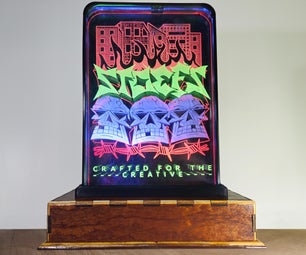Introduction: Flashing L.E.D. Using 555 Timer
There are two sets of pictures, the top shows the progression of the project and the bottom shows each step individually.
This is my first instructable and it is also an assignment so please leave comments.
Thank you.
Step 1: Parts List
Here you will find a list of all required parts, their pictures, prices and where to get them.
There is also an excel file attached.
1. Breadboard
2. 9v Battery
3. Battery clip
4. Jump Wires
5. 555 Timer
6. Capacitor 1μF
7. Resistor 1k Ohm x 2 (brown, black, red)
8. Resistor 470k Ohm (yellow, purple, yellow)
9. L.E.D.
Time needed to finish this project: 5 - 10 min.
All the above parts can be bought at http://radionics.rs-online.com/web/ next day delivery (Ireland).
Attachments
Step 2: 555 Timer Pin - Out and Breadboard Layout
First picture shows a pin-out for the 555 Timer. This will be needed in order to connect the chip.
The second picture shows how the paths in the breadboard are connected.
Step 3: Putting All Together
CAUTION !!!
This project contains small parts which can be ingested or inhaled, so keep away from young children.
Make sure to push all the parts in to the breadboard that they make contact with it.
1. Place the 555 Timer chip in the middle of the breadboard, make sure to put it in the right way round other wise when you will connect the battery the chip will burn.
2. Using short length of jump wire connect Pin 1 (negative) to the bottom row of the breadboard (ground).
3. Connect Pin 8(positive) to the top row of the breadboard (VCC).
4. Take another length of jump wire and connect Pin 4 with Pin 8.
5. Identify the legs on the capacitor C1, the short one is the negative and the long one is positive. Connect the positive leg to Pin 2 and the negative leg to the ground (GND).
6. Now connect Pin 2 with Pin 6 using piece of jump wire.
7. The resistors can be connected either way round. Using the 470k Ohm (R1) resistor connect Pin 6 with Pin 7.
8. Take the 1k Ohm (R2) resistor and connect Pin 7 to VCC.
9. Connect one end of the second 1k Ohm (R3) resistor with Pin 3 (output) and any empty row on the breadboard (this resistor will be connected with L.E.D. in the next step).
10. Identify the legs on the L.E.D., short one is the negative(-) and the long one is positive(+). Connect the positive leg with the resistor and the negative leg to the GND.
11. The final step is to connect the battery clip, the red lead to the VCC and the black lead to the GND. Connect the 9v battery and enjoy the effect.










